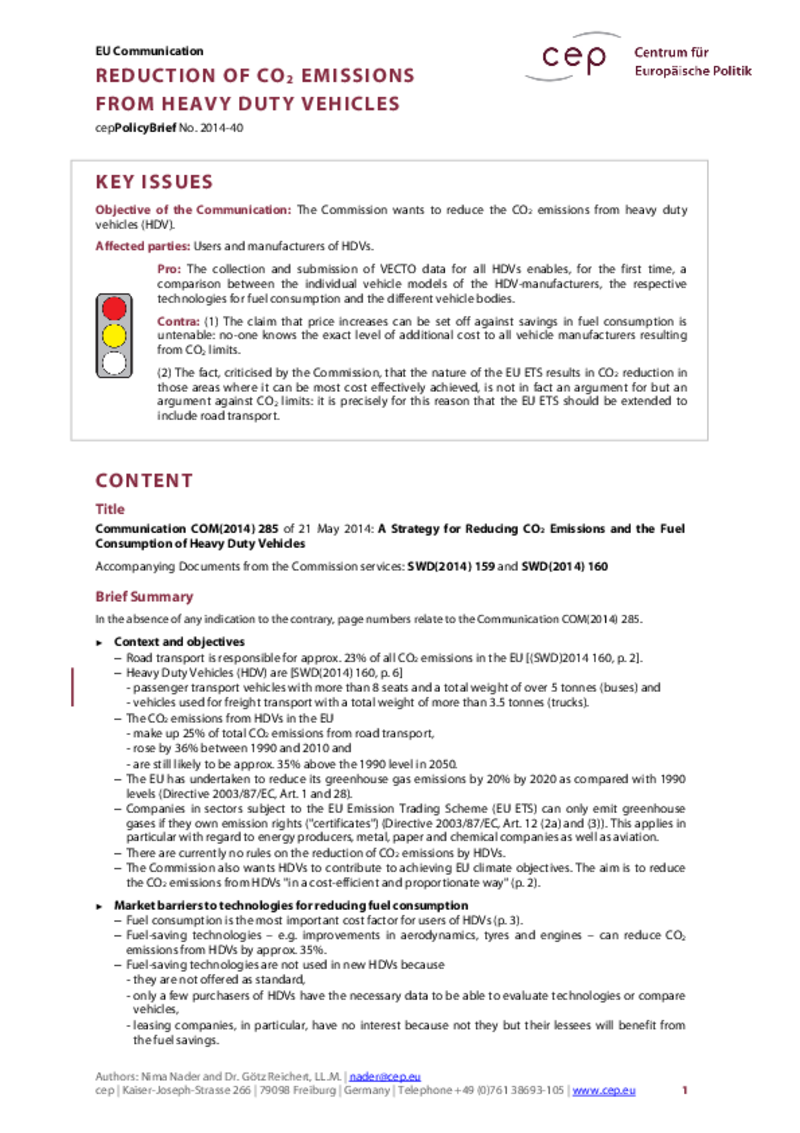
Transport
Reducing CO2 Emissions from Heavy Duty Vehicles (Communication)
cepPolicyBrief
The collection and submission of VECTO data for all HDVs enables, for the first time, a comparison between the individual vehicle models of the HDV-manufacturers, the respective technologies for fuel consumption and the different vehicle platforms. The claim that price increases can be set off against savings in fuel consumption is untenable: no-one knows the exact level of additional cost to all vehicle manufacturers resulting from CO2 limits. The fact, criticised by the Commission, that the nature of the EU-ETS results in CO2 reduction in those areas where it can be most cost effectively achieved, is not in fact an argument for but an argument against CO2 limits: it is precisely for this reason that the EU ETS should be extended to include road transport.
Download PDF
| Reducing CO2 Emissions from Heavy Duty Vehicles COM(2014) 285 (publ. 11.10.2014) | 98 KB | Download | |
 | |||



